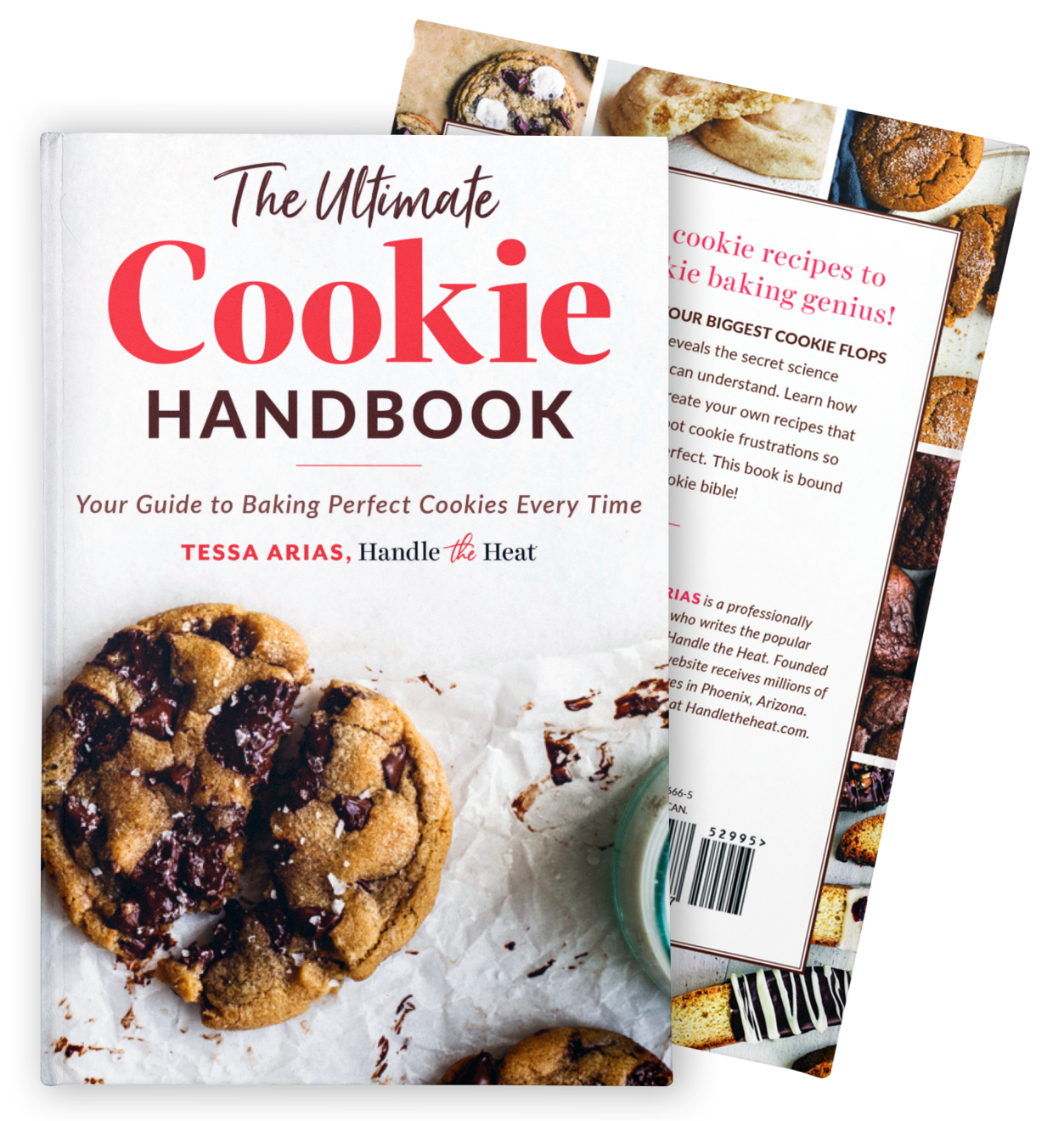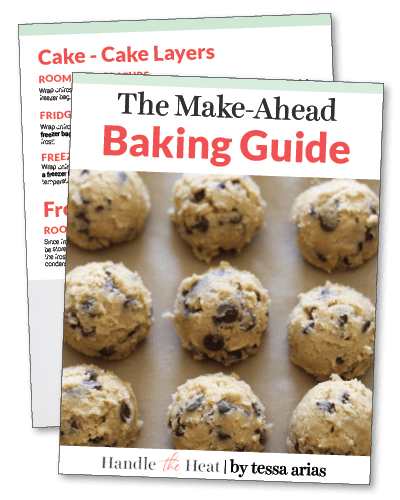
Handle The Heat » Recipes » Pie Recipes
The perfect pie recipe for any occasion is waiting for you below. Chocolate pies, peanut butter pies, apple pies – there’s a pie that everyone will love here.
With these how-to articles and my Best Ever Pie Crust recipe, you’ll have perfect homemade pie crust every time.
If your kitchen is above 73°F, you can refrigerate all of your ingredients and equipment including your bowl, rolling pin, and pie tin until it’s between 65-70°F (dip an instant thermometer into your flour to gauge the temperature). If it’s a hot day, or you have hot hands, you’re probably better off making your pie dough in a food processor.
If your kitchen is warm, fill freezer bags with ice and a little water and set them on your work surface for 10 minutes to chill it before rolling out your pie dough. This will prevent the butter from becoming greasy as you work with the dough.
Blind baking is a term for pre-baking pie crust before filling is added. I personally much prefer the texture of pie crust when it’s baked first. It’s crispier and stays that way for longer.
To blind bake: Line chilled crust in a pan with foil, pressing all the way to the edges to ensure they don’t slump down. Fill the crust completely with pie weights, rice, or dried beans. It’s important that you fill completely to the top edge of the crust to prevent shrinking or slumping.
Place on a rimmed baking pan. Bake for 18 to 20 minutes at 400°F, or until pale and just beginning to brown but not raw. The higher baking temperature allows the crust to set quicker, preventing it from losing its shape or flute.
If you typically have soggy crust problems, try baking the pie on the bottom rack of your oven or on a baking stone.
Check out my How to Blind Bake Pie Crust article here.
Aluminum – These pans heat up and bake quickly, so you may need to shave some time off your baking to avoid overdoing it. Avoid dark or coated aluminum pans for baking pie crust, which are likely to result in overly browned crusts.
Glass – bakes more slowly than aluminum, but since it’s slow and you can see how brown your crust is getting, you’re less likely to over bake. Don’t take your pie directly from the freezer to the oven unless the manufacturer says it’s safe to do so. I like this OXO glass pie pan because it’s made from borosilicate glass to withstand extreme temperature changes without shattering.
Ceramic – These are pretty for serving at special occasions, and like glass, they bake more slowly and shouldn’t be subjected to extreme temperature changes.
Learn more about pie pans and how they compare in my Best Pie Pans article here.

With this guide, you’ll learn how to avoid a pie crust that shrinks, a crumbly pie dough, a dough that sticks to the rolling pin, and lots more!
Watch these videos for how to measure flour and roll out pie dough – two crucial steps of perfect homemade pie dough!

Get our *free* Make-Ahead Baking Guide with tons of tips for making pies, muffins, scones, breads, and other recipes ahead of time!
View All Recipes >
I highly recommend checking out my Best Ever Pie Crust recipe and reading through all the tips in the pink tip box. This recipe is practically foolproof, so it’s perfect if you’re intimidated by homemade pie crust.
Don’t believe me? Here’s what one of our readers has to say: “I’ve been baking for 20 years. I’m also a chemist. Pie crust has been my NEMESIS. I swore it off on my last attempt 4 years ago, but for some reason I wanted to try this. And it WORKED!!! Holy crap!! It was so easy to work with and actually tasted good. FINALLY!”
Pastry dough can be shaped into a disc and refrigerated for
up to 3 days, as long as it’s well wrapped in plastic.
Unbaked pie shells can also be refrigerated for up to 3
days. This works perfectly for single-crust pies like pumpkin
or sweet potato. Simply roll out your dough, lay it into your
pie tin, crimp the edges, and cover loosely with plastic wrap.
When ready, simply remove from the fridge, fill, and bake.
Pastry dough can be shaped into a disc and frozen for up
to 2 months, well wrapped in plastic and placed in a freezer bag. Defrost in the fridge overnight.
You can also freeze already rolled out dough if you have
room in your freezer. You can use it straight from the freezer;
just let it sit at room temperature briefly so it becomes easier
to press into the pie tin.
Unbaked pie shells can also be covered and frozen for up to
2 months. No thawing necessary.
Make sure the dough is well chilled, and that the work surface, the dough, and the rolling pin are all lightly floured. Keep turning the dough so it won’t get stuck to the counter, and keep lightly flouring as needed. OR, for easier rolling and clean up, roll the dough between two sheets of parchment paper or plastic wrap.
Check out this video where I show step-by-step how to roll out pie dough.
Yes! Store pumpkin pie covered in the fridge for up to 3 to 4 days. The longer the pie is in the fridge the softer the crust will grow.
